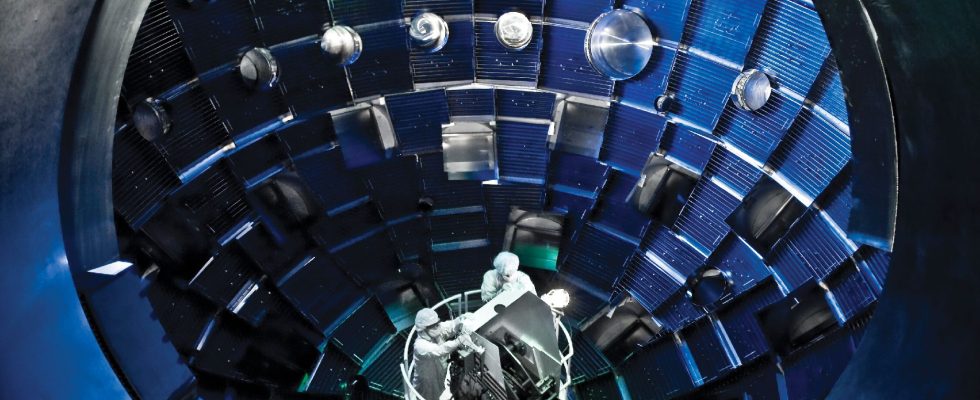By focusing 192 very powerful lasers on a very small target, they had created the beginning of a self-sustaining nuclear fusion reaction last December, thus achieving a historic breakthrough. According to a recent article by FinancialTimes, researchers at the National Ignition Facility (NIF) in California have just repeated the experiment. They would even have managed to produce more energy than before. Greg De Temmerman, doctor in experimental physics and managing director of the think tank Zenon Research, returns for L’Express to this new advance which, even if it does not deserve the headlines, is nonetheless important for the sector.
L’Express: Obviously, American researchers working on inertial laser fusion have succeeded in reproducing the results they obtained at the end of last year. Why is this important from a scientific point of view?
Greg DeTemmerman: This shows that researchers are gaining control. Those at the NIF, who are working on inertial fusion using lasers, started to obtain really interesting results in 2021. But then it took them 18 months to reproduce them due in particular to difficulties linked to the manufacture of the targets. – a small capsule containing fuel – but also to understanding what happens during the fusion itself because it generates instabilities. If the article of FinancialTimes true and that the researchers managed to reproduce – and even slightly improve – the results obtained last year, then it means that they have improved the way of producing targets and that they have better mastery of the process. It’s interesting: in principle, scientists will now be able to perform fusion more regularly, obtain more data, better understand this phenomenon… We’re going from something exceptional done just once to something a little more “routine” even if it concerns heavy experiments.
Can we deduce that the merger will soon be operational? In a recent survey, around fifteen start-ups estimate that they will be able to inject electricity into the grid between 2030 and 2035. Four of them are even counting on energy production before 2030!
Nuclear fusion is progressing, but let’s not forget that we are “deep tech”, an area in which certain actors have an interest in multiplying positive communications. Investors are not fooled. They know very well that the majority of start-ups they support are at risk of collapsing at some point. It’s part of the game. But it only takes 10% of them to reach the end to be able to win the bet. Are we closer to fusion now thanks to the progress of the NIF? Difficult to answer. Basically, the facilities of this laboratory are used for nuclear explosion simulations. Their goal is not to develop a fusion reactor for civil society.
Some start-ups announce that they want to quickly provide energy to society through fusion. But you have to realize that between producing a little electricity to show that it is possible and integrating a real power plant into the national network operating 24 hours a day, there is a huge difference. Let’s not forget either that some investors have joined the ship for certain technological bricks and not for the merger itself. Many of them are interested, for example, in high-temperature superconductors, materials that conduct current very well without electrical resistance. Finally, it should be remembered that fusion remains an extremely complex process. It is very difficult to reach the conditions to start it. Once you are there, everything becomes easier but we are not at that stage yet.
What is happening to the international ITER project? This other way of achieving fusion, by very strongly heating a plasma confined in a magnetic field, seems to have some lead in the wing.
It is true that the situation of ITER seems complicated at the moment. Even if the communication around this vast project has changed, and the teams are more open about the difficulties encountered and the way to solve them, we hear more about competing projects. It’s quite logical: fusion, despite the uncertainties it brings, remains a promising technology. The good news about her finds a lot of echo in the media. In 2014, the announcement of a big delay on the ITER project created a lot of frustration. From that moment, a wave of start-ups was launched with the aim of developing fusion differently. One of them, dubbed Commonwealth Fusion Systems, works in collaboration with MIT and succeeded in raising $1.8 billion in 2021. This enormous amount has caused much ink to flow, but overall the attraction of investors for fusion has been maintained for about ten years. So the race continues!
